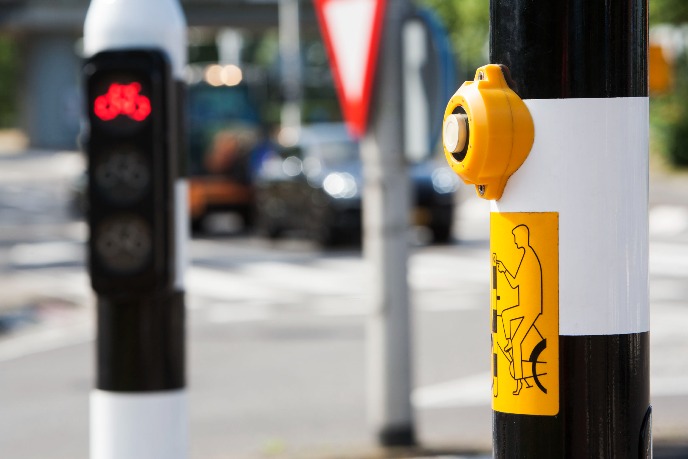Veilig zelfstandig fietsen door slechtzienden
Kunnen slechtzienden veilig zelfstandig fietsen? Bart Jelijs stelt dat richtlijnen daarvoor niet alleen gebaseerd moeten zijn op de aard of de ernst van een visuele functiebeperking, want dat sluit veel slechtziende mensen onnodig uit. Bovendien zijn niet alleen omgevingsomstandigheden (zoals de infrastructuur en verkeerssituatie) belangrijk, maar óók zelfvertrouwen. Jelijs promoveert op 30 maart aan de Rijksuniversiteit Groningen.
Veel mensen fietsen dagelijks, bijvoorbeeld om naar school, het werk of de supermarkt te gaan. Ook wordt deze vorm van beweging steeds relevanter. In de eerste plaats blijven mensen dat steeds langer doen (denk aan ouderen met elektrische fiets). Ten tweede wordt fietsen sterk gestimuleerd, mede vanwege voordelen voor klimaat, ruimte en gezondheid. En tot slot zal slechtziendheid steeds vaker voorkomen in de nabije toekomst, als gevolg van de vergrijzing. Veel oogaandoeningen ontstaan of ontwikkelen zich op latere leeftijd.
Het is bekend dat er mensen met ernstige (permanente) beperkingen in gezichtsscherpte of gezichtsveld zijn die zelfstandig fietsen. Maar er zijn ook mensen met mildere visuele functiebeperkingen die zijn gestopt met fietsen. Hoé slecht iemand ziet is niet altijd doorslaggevend voor het gebruiken van de fiets: hierbij spelen ook andere omstandigheden mee. Het doel van het onderzoek was te bekijken wélke omstandigheden dit zijn, welke moeilijkheden slechtziende fietsers ervaren en hoe zij hun gedrag aanpassen om te kunnen fietsen. Meer kennis hierover helpt andere slechtziende mensen bij het (leren) fietsen en bij het optimaliseren van hun mobiliteit.
Het onderzoek van Jelijs laat zien dat voor het gebruiken van de fiets niet alleen omgevingsomstandigheden (zoals de infrastructuur en verkeerssituatie), maar ook het zelfvertrouwen belangrijk zijn. Moeilijkheden die veel slechtziende fietsers ervaren hebben te maken met: licht-donkerwisselingen, oversteken van kruisingen zonder verkeerslichten en de slechte zichtbaarheid van anderen. Slechtziende fietsers rijden vaker langzamer dan hun goedziende leeftijdgenoten, mogelijk om de visuele informatie te verwerken. Er zijn geen aanwijzingen dat slechtziende fietsers andere, veiligere routes nemen. Een belangrijke algemene bevinding is dat richtlijnen voor het zelfstandig fietsen niet alleen gebaseerd moeten zijn op de aard of de ernst van de visuele functiebeperking, want dit sluit veel slechtziende mensen onnodig uit van het fietsen.

Meer nieuws
-
08 december 2025
Burgerparticipatie onmisbaar voor een duurzame energietoekomst
-
23 oktober 2025
Negen wetenschappers van de RUG ontvangen Vidi-beurs
